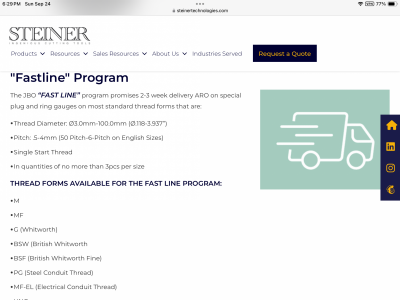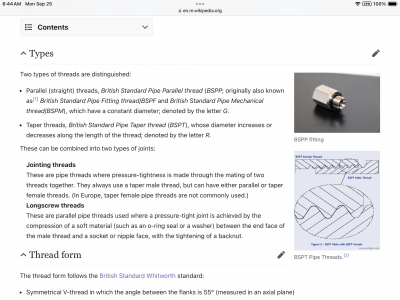19 and 18 tpi would be 3/8 pipe sizes. All NPT variants an both BSP variants use those threads. That's in the neighborhood of 16mm outside diameter. The OP has measured 9.45mm outside diameter on the mystery threads. His measurement is within a fractional millimeter of 1/8 pipe thread in either system, That's where the 27 and 28 tpi comes from. Or a 3/8 BSF bolt thread, which would be 20 tpi.
I’m confused (1/8, 3/8, 5/8? 18, 19, 20, 27, or 28 TPI?) and should bow out, but here’s what I’m taking as givens:
- the photo appears to show a taper which indicates a pipe thread.
- it measures 20G on his gauge. I don’t know if that means 20 TPI, but the pitch at least is easy enough to measure.
- OP measured 9.45mm dia which is near as nuts 0.375” or 3/8”. Unsure which end of the taper this was taken on.
- the drill size for 1/8” NPT or BSPT is 21/64”, so it makes sense to me for a male plug to measure about 3/8” somewhere along its length (the drill diameter is slightly smaller than the threads on the male part.
- but 1/8 BSPT is 28 TPI and 1/8 NPT is 27 TPI. Those threads in the photo don’t look that fine to me (could be wrong), and it seems odd a gauge marked 20 G would (nearly?) match 27 or 28 TPI.
So confused.

But I still think simply measuring the distance between 7 threads is the easiest way to determine the actual TPI for certain (hopefully 27 or 28TPI).



